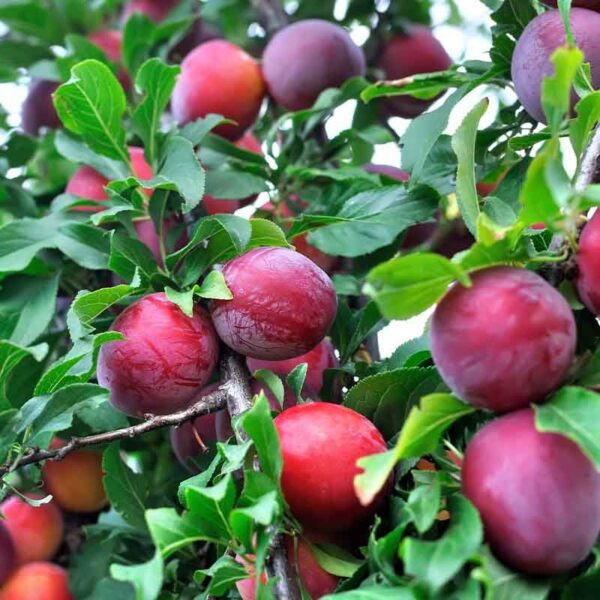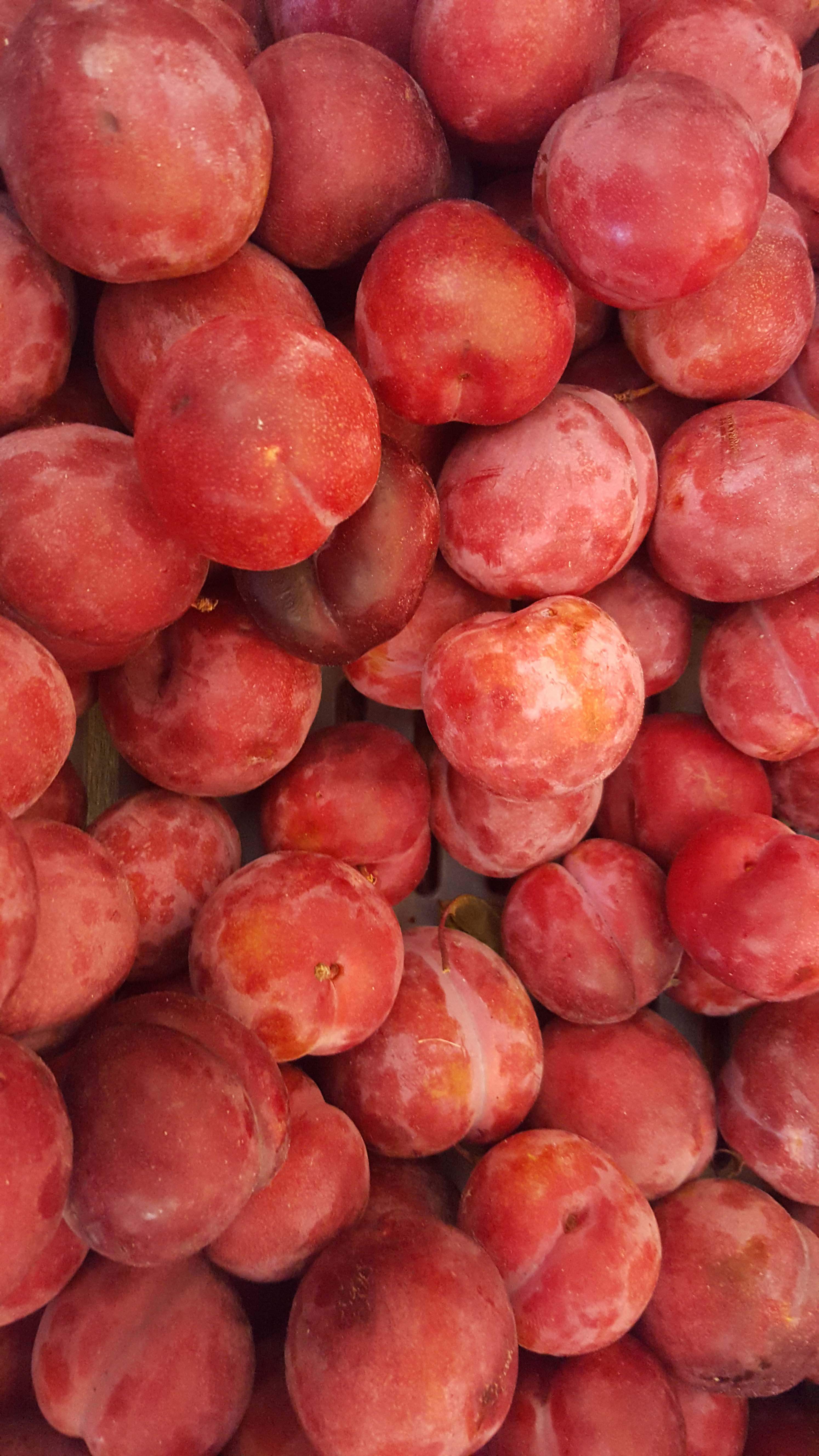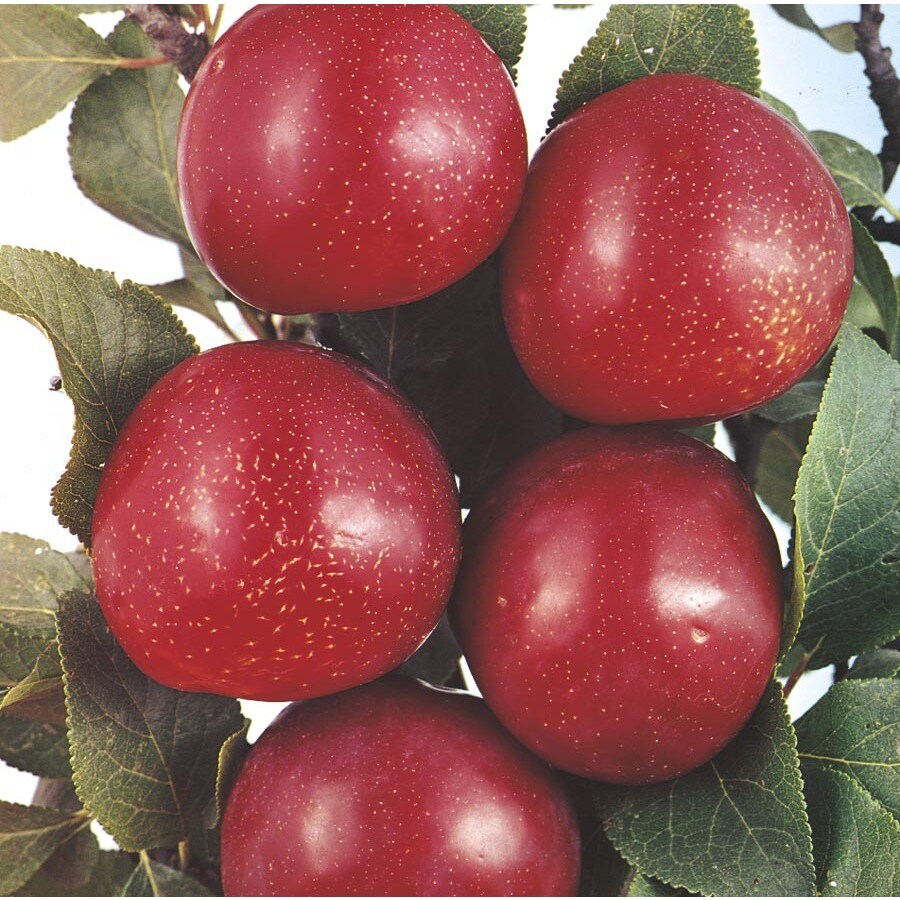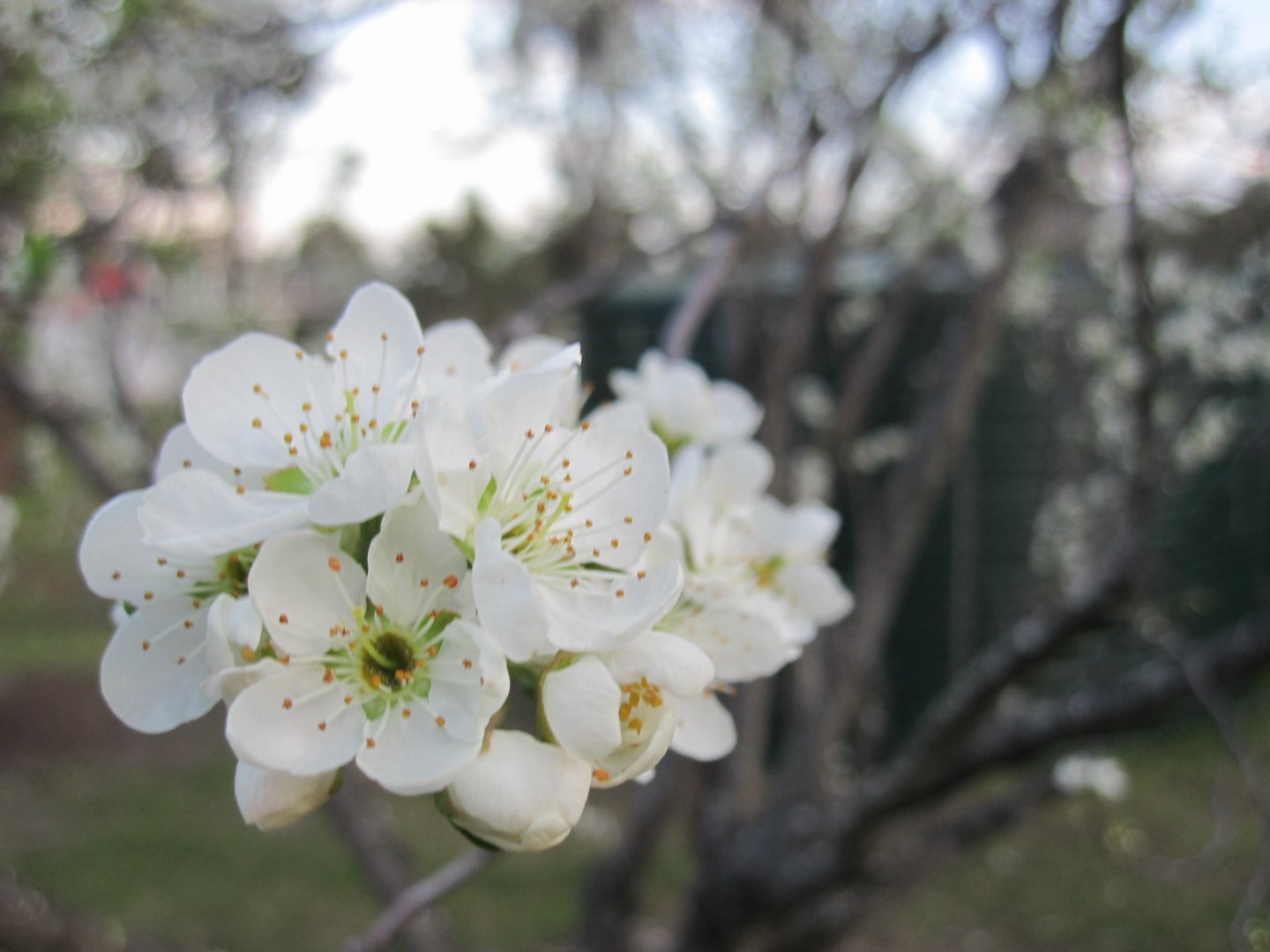5Gallon Satsuma Plum Tree (L10491) at

Dwarf Satsuma Plum Australia
The satsuma is one of several varieties of "blood plum," so called because the tart, reddish-purple peel encases juicy, ruby-red flesh (via Fruit Salad Trees). It was originally given the somewhat.

Satsuma Plum Tree
Satsuma Japanese Plum Tree. One of the best Japanese Plums, Satsuma Japanese Plum Tree features delicious, large, round, dark fruit. Great for fresh eating and preserves. Satsuma fruit is firm, juicy, and red to the core. Pollinate with other Japanese variety. Site and Soil: Plums like 1/2 day to full sun and well-drained soil.

Plum Satsuma Dwarf Fruit Trees Garden World Nursery
A Japanese Plum. 'Satsuma' came from a tree received by Burbank from Yokohama, Japan, in Dec. 1885 and was first named "Blood Plum of Satsuma" after a province in Japan (Hedrick, 1911). Buds were sold under the original name in 1887, and the trees were first sold in 1889. The tree medium to large, upright-spreading, vigorous, moderately.

PLUM Satsuma
The Satsuma plum needs a pollinator to produce heavy crops in late July to early August. (300 Chill Hours) See our price list for our Satsuma Plum Trees for sale below! The Satsuma plum is a large Japanese variety of dark, solid red skin and dark red flesh.

Satsuma Plum Trees for Sale
One of these is the Satsuma tangerine. Satsuma is virtually seedless and has a loose rind that is very easy to peel. The fruit is sweet, with just a bit of tartness, and is very juicy. The skin is.

Satsuma Plum Tree, Japanese type (Semidwarf)
Return the soil to the planting area packing it firmly around the root ball. Fill the hole until the soil line is just at the base of the plant, where the roots begin to flare out from the main stem. Water the plant well then add a 2" (5cm) layer of mulch, such as shredded bark, around the planting area. Keep the mulch at least 4" (10cm.

5Gallon Satsuma Plum Tree (L10491) at
Satsuma Plum Tree. Great for Making Jam. Semi-dwarf on Citation rootstock. Zones: 6-9. Chill hours: 400-500. Harvest: July-August. Looks: Mottled maroon over green skin, dark red meaty flesh. Personality: Sweet, mild, flavor and not tart. Facts of note: Juicy, red flesh with sweet flavor is great fresh, cooked or canned.

Update Plum Tree Flowering With Fishwater
Good choices for companion pollinating plum trees are, of course, another Satsuma or one of the following: "Methley," a sweet, red plum "Shiro," a large, sweet vibrantly yellow plum "Toka," a red hybrid plum; This plum varietal will reach a height of about 12 feet (4 m.). One of the earliest blooming fruit trees, it flowers in late.

Plum Satsuma Buy Plum Satsuma A Popular Japanese Blood Plum That
Satsuma Plum Tree. Prunus salicina 'Satsuma'. $89.99 40% off! #3 Container 4-5 Feet. Add to Cart. Stay Protected with Plant Sentry. Details. The Japanese-type Satsuma Plum Tree (Prunus salicina 'Satsuma') is a fantastic Plum for warmer climates and areas with mild winters. Starting as a cloud of white, fragrant blossoms and quickly transforming.

The Satsuma Plum Everything You Need To Know Minneopa Orchards
Prunus salicina 'Satsuma'. $39.25. Satsuma Plum on Standard (Myro) root - Extra Large 5/8" up caliper grade. Quantity: Add to cart. Summary. The Satsuma plum has medium to large, round, dark red fruit with a small pit. The firm, juicy fruit has a sweet and levely flavor that is excellent for frest eating, cooking, canning or preserves.

Plum Satsuma Japanese Blood Plum, Prunus salicina, grafted 1 year old
Because Satsuma trees have a prostrate growth habit, pruning is essential to prevent fruit on low-lying limbs from touching the ground. The best time to prune your tree is early spring after the danger of frost. Prune any branches growing below 18 inches above the ground. Remove leaf debris from beneath the trees to help keep them clean and.

Satsuma Plum C&J Gardening Center
A Satsuma Plum is a Japanese variety of tree that produce juicy fruit that you can eat right from the tree. Although the name suggests that this variety is from Japan, it originated in China. Japan is included in the name of the Satsuma Plum tree because it was introduced to America by Japan. Many people choose to plant and grow Satsuma plums.

Plum Satsuma Japanese Blood Plum, Prunus salicina, grafted 1 year old
Finally, we'll provide you with some recipe ideas and uses for your fresh Satsuma plums. Now that you know what to expect, let's get started with planting your Satsuma plum tree. Planting Satsuma Plum Trees. If you're interested in growing your own Satsuma plums, the first step is to plant the trees. Here are some tips to help you get.

Buy Plum Satsuma Fruit Trees Prunus salicina
A Satsuma Japanese plum tree is probably the best option if you're looking for a juicy plum to eat straight off the tree. Japanese Plum Information. Within the Rosaceae family, which also includes all stone fruits like peaches, cherries, and apricots, are plums, or Prunoideae. As previously mentioned, the fruit of the Satsuma Japanese plum.

Forum Satsuma plum tree
Owari is the country's most popular satsuma tree! They grow quickly and mature at 10-15 ft tall, with a canopy spread of 8-10ft around. All satsumas should be pruned so branches stay at least 2ft off the ground. I wouldn't cut it less than 10ft tall, and 6ft canopy spread. Fragrant white flowers will appear in April, a great combo with the.

Satsuma Plum Trees for Sale
Satsuma Plum Tree (P. salicina 'Satsuma') Satsuma Plum Tree $ 79.95. naturehills $149.99 Buy now; What is Satsuma Plum Tree. Delivering a huge, healthy harvest of plums to eat right off the tree, the Satsuma Plum is an Asian variety that's second to none. It gives you larger, firmer plums that are delicious and juicy, perfect for enjoying.